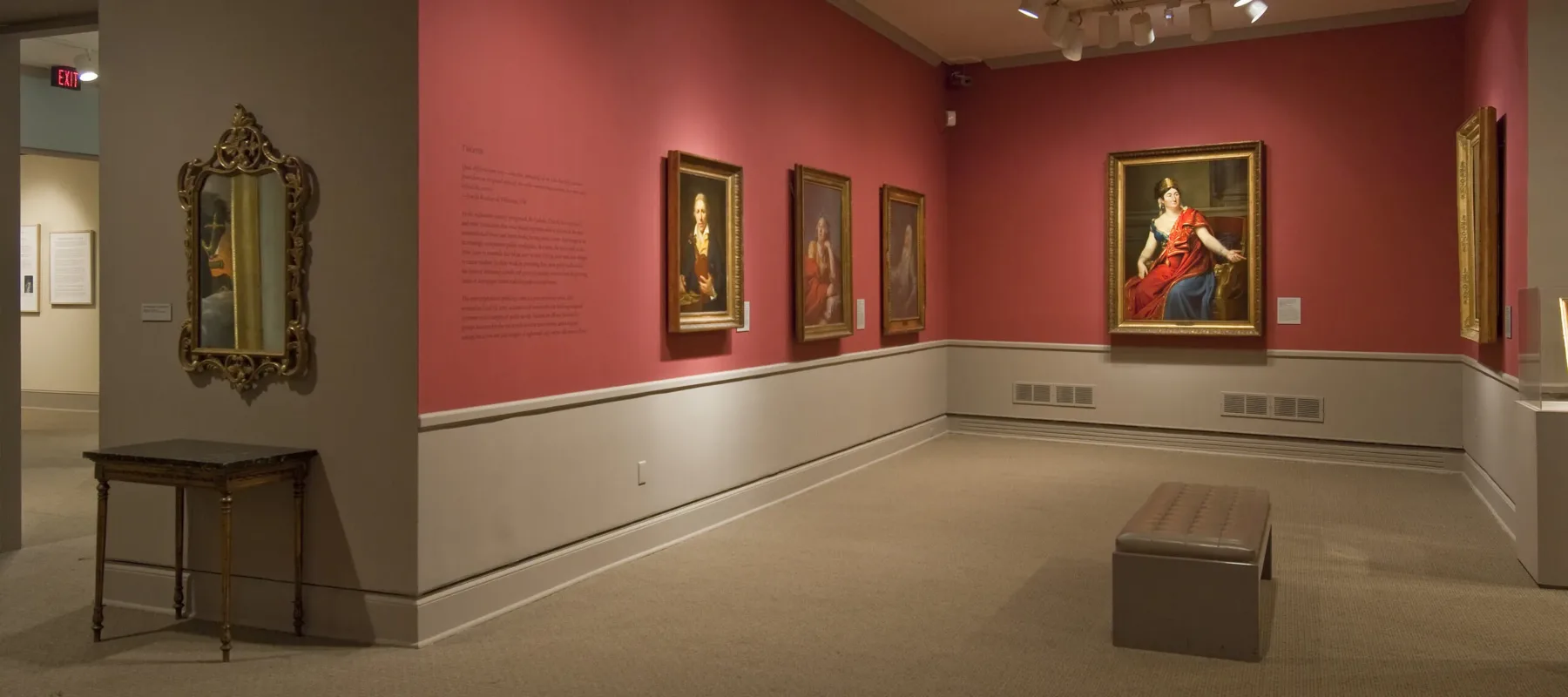In Royalists to Romantics: Women Artists from the Louvre, Versailles, and Other French National Collections, 77 works by 35 artists display the talents of French Revolution-era women artists. Their paintings are windows into their careers and the singular challenges of their time. The catalogue that NMWA has published to illustrate Royalists to Romantics includes essays as well as individual artist biographies that give insight into the lives of women artists working in France between 1750 and 1848. This excerpt explores the life of one the show’s featured artists, Marie Victoire Lemoine.

Marie Victoire Lemoine led a remarkably quiet existence in one of history’s most tumultuous eras. Born into the middle-class home of Charles Lemoine and Marie Anne Rousselle, Lemoine never married, living with family throughout her life.¹ She was the eldest of four daughters, three of whom were practicing artists (including Nisa Villlers, née Marie-Denise Lemoine, 1774-1821).² She exhibited sporadically and attracted only occasional notice. Yet she produced a stunning, if enigmatic, oeuvre that is still being pieced together.
Lemoine studied with the history painter François Guillaume Ménageot (1744-1816), a member of the Académie royale de peinture et de sculpture.³ She is also said to have taken lessons from Élisabeth Louise Vigée-LeBrun, who with her husband owned the home where Ménageot lived.4 Indeed, Joseph Baillio, who has compiled a catalogue of Lemoine’s work, observes that Lemoine’s portraits and allegories are closer in spirit to those of Vigée-LeBrun than to the more dramatic canvases of Ménageot.5

That the first painting Lemoine exhibited was a portrait (untraced) of the princesse de Lamballe, a favorite of Queen Marie-Antoinette, suggests connections at court; Lemoine sent the work to Pahin de la Blancherie’s Salon de la Correspondance in 1779.6 Commissions also came from the circle of the duc de Chartres (who later became the duc d’Orléans); Lemoine’s portrait of the young Mademoiselle de Chartres (untraced) appeared in Pahin’s rooms in 1785. Lemoine is represented in the current exhibition by another work from the 1780s, an allegory of painting presumed to be a self- portrait. Here a youthful female figure dressed in a white, classically inspired robe and wearing violets in her hair appears seated at, but turning away from, an easel. The attributes of painting are all present, but none is in use: the figure’s right-hand rests on an upright maulstick, and her left hand steadies a palette that rests on her lap along with a group of large paintbrushes.
Lemoine made her Salon debut in 1796, exhibiting three genre paintings and a selection of miniatures. One of these, her best-remembered work, is now in the collection of New York’s Metropolitan Museum of Art, which gives it the title Atelier of a Painter, Probably Madame Vigée Le Brun (1755 – 1842), and Her Pupil.7 She would go on to display portraits and genre scenes at the Salons of 1798, 1799, 1802, 1804, and 1814.
Notes
1. The biographical information included here is based on Joseph Baillio, “Vie et oeuvre de Marie Victoire Lemoine (1754 – 1820),” Gazette des beaux-arts, 6th ser., 127 (April 1996), pp. 125 – 64; Margaret A. Oppenheimer, “Women Artists in Paris, 1791 – 1841” (PhD diss., New York University, 1996), pp. 222 – 24; and Mary D. Sheriff, “Lemoine, Marie-Victoire,” in Dictionary of Women Artists, ed. Delia Gaze (London, 1997), vol. 2, pp. 836 – 39.
2. On Villers, see Margaret A. Oppenheimer, “Nisa Villers, née Lemoine (1774 – 1821),” Gazette des beaux-arts, 6th ser., 127 (January 1996), pp. 165 – 80. On Menageot, see Nicole Willk-Brocard, Francois-Guillaume Menageot, 1744 – 1816: Peintre d’histoire, directeur de l’Academie de France a Rome (Paris, 1978).
3. On Ménageot, see Nicole Willk-Brocard, François-Guillaume Ménageot, 1744-1816: Peintre d’histoire, directeur de l’Académie de France à Rome (Paris, 1978).
4. On Lemoine’s studying with Vigée-LeBrun, see Ulrich Thieme and Felix Becker, eds., Allgemeines Lexikon der bildenden Künstler von der Antike bis zur Gegenwart (Leipzig, 1929), vol. 23, p. 34.
5. Baillio, “Marie Victoire Lemoine,” p. 126.
6. The portraits of the princesse de Lamballe and Mademoiselle de Chartres are listed as untraced in Mary D. Sheriff, “Marie-Victoire Lemoine,” 2005 entry in Dictionnaire des femmes de l’ancienne France, http://www.siefar.org/dictionnaire/fr/Marie-Victoire_Lemoine.
7. Illustrated, with the title Interior of the Atelier of a Woman Painter, in Ann Sutherland Harris and Linda Nochlin, Women Artists, 1550 – 1950, exh. cat. (New York, 1976), p. 188, no.

